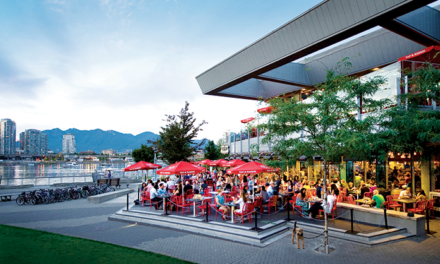By John Rigg- Burlington, On
If you’re a child of the 1980s, you are no doubt aware of the term bonsai. The Karate Kid risked his life to save one from the bottom of a treacherous pit (in one of the worst movie sequels ever), and Mr. Miyagi screamed it at the top of his lungs whenever he wanted Daniel Son to hit something. What you may not know, is that the ancient art of bonsai care goes back to the dawn of time, and is a testament to the love of, and for, trees.
The art of Bonsai is a rich Japanese custom, often referred to as the “living art”. These unique trees are pruned and treated in order to prematurely emulate old age. Caring for a Bonsai becomes a life-long pursuit, and many specimens become family heirlooms which can be passed down generations with proper care. Why go through with this kind of commitment, you may say? Well as most things rooted in Asian tradition, the ancient Japanese viewed this practice as a mirror image to one’s own life. The tree, like humans, must overcome many of the same pitfalls and obstacles; both may be cut, carved, burned, disfigured, forced to adapt to changing food and water supplies, etc. What is important is not that these things happen, it is the response and care to them that ultimately matters.
The pastime encompasses many styles, each with a traditional Japanese name. This art-form also includes a close connection with the potting industry. An important part of the Bonsai culture is to match a tree with a pot that completes the pair. Since Bonsai means “a tree in a tray”, the pair must be compatible. Caring for these potted beauties is serious business, and goes far beyond simple pruning and maintenance. Daily watering and frequent fertilizing is necessary to create an optimum environment, with each species of trees having its own unique requirements. This knowledge can be found in the plethora of Bonsai literature out there, but fine tuning is important as an individual gains experience with his or her own trees.
Granular media made from volcanic rock, pumice, granite, expanded silica rock, shale, and fired clays make up a good portion of the Bonsai soils available. Typically between 1” and 3/8”, this soil is fast draining to prevent water pooling, while allowing oxygen to penetrate the root zone. Typically sharp-edged, this aggregate promotes root splitting to increase feeder root area. Since this soil has little nutrient retention capacity, fertilizers must be added routinely.
But what does the art of Bonsai really come down to? Well, turns out a pretty simple philosophy really: harmony. Harmony between the size of the tree and the pot, harmony between the type of tree and the colour of the pot, and harmony between the style of bonsai and the style of the pot; all are requirements for an aesthetically pleasing and traditionally accurate presentation. Yes, it takes learning, practice and commitment to transform yourself into a world-class Bonsai artist, but the end result is definitely worth it. You may get discouraged at times, but when you feel like giving up, just remember one of the most ancient of Japanese proverbs: “Sometimes, even monkeys fall from trees.”









